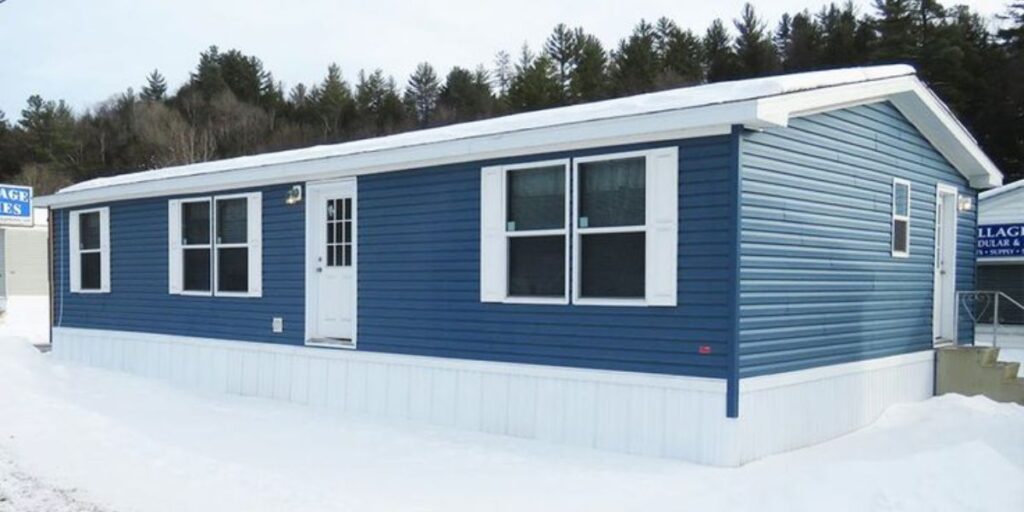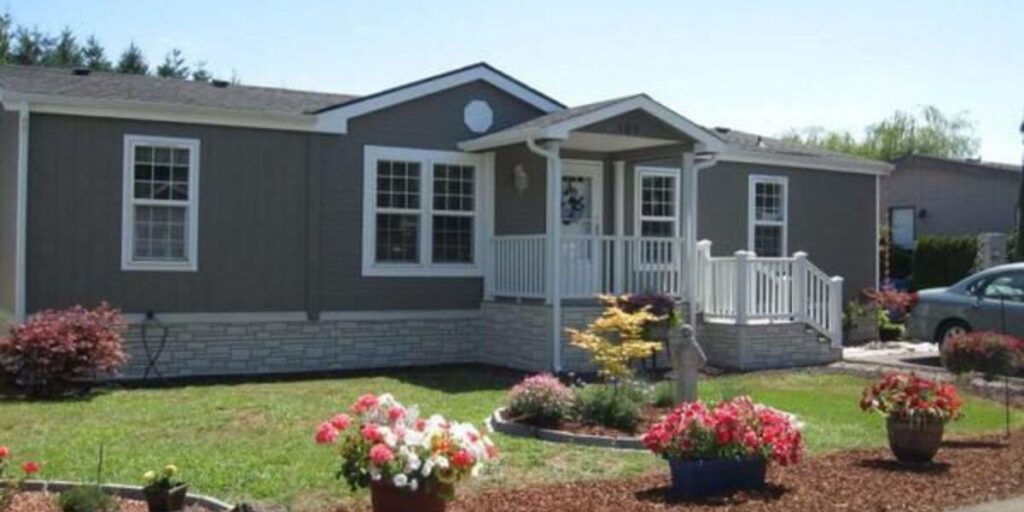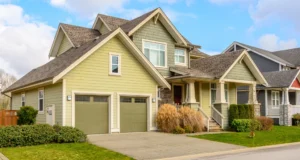
Introduction
In recent years, double wide mobile homes have emerged as a popular housing option for many people across the United States. They offer an affordable and versatile alternative to traditional site-built homes, providing spacious living areas and a range of customization options. This article will explore the various aspects of double wide mobile homes, including their history, benefits, construction process, customization options, financial considerations, and the future of mobile home living.
History of Mobile Homes
Origins and Evolution
Mobile homes, also known as manufactured homes, have a rich history that dates back to the early 20th century. Initially, they were designed as travel trailers, intended for short-term use and mobility. These early versions were small, single-wide units that could be easily towed behind a vehicle.
The post-World War II era saw significant changes in the mobile home industry. With the housing shortage caused by returning veterans, there was a need for quick and affordable housing solutions. This period marked the transition from travel trailers to more permanent mobile homes. The introduction of double wide mobile homes in the 1960s was a game-changer, offering more space and comfort for families.
Modern Mobile Homes

Today’s double wide mobile homes are far removed from their early predecessors. They are built to stringent standards set by the U.S. Department of Housing and Urban Development (HUD), ensuring quality construction and safety. These homes are manufactured in controlled environments, which allows for better quality control and efficiency.
Benefits of Double Wide Mobile Homes
Affordability
One of the primary advantages of double wide mobile homes is their affordability. Compared to traditional site-built homes, mobile homes typically cost less per square foot. This makes them an attractive option for first-time homebuyers, retirees, and those looking to downsize.
Speed of Construction
Double wide mobile homes are built in a fraction of the time it takes to construct a traditional home. The manufacturing process is streamlined, with sections of the home being constructed simultaneously. This efficiency reduces labor costs and speeds up the overall timeline, allowing homeowners to move in much sooner.
Quality and Durability
Modern double wide mobile homes are built to last. They are constructed with high-quality materials and must adhere to HUD standards. This ensures that they are energy-efficient, weather-resistant, and safe. Many manufacturers offer warranties on their homes, providing additional peace of mind to buyers.
Customization and Flexibility
One of the significant benefits of double wide mobile homes is the level of customization they offer. Buyers can choose from various floor plans, finishes, and features to create a home that suits their needs and preferences. This flexibility extends to the placement of the home as well, with the ability to situate it on private land, in mobile home parks, or on leased lots.
Environmental Impact
The construction of double wide mobile homes tends to have a lower environmental impact compared to traditional homes. The controlled manufacturing process reduces waste and allows for better resource management. Additionally, many modern mobile homes are built with energy-efficient materials and systems, reducing their overall carbon footprint.
Construction Process
Design and Planning
The construction of a double wide mobile home begins with the design and planning phase. Manufacturers work with buyers to create a customized floor plan that meets their needs. This phase includes selecting materials, finishes, and features. Once the design is finalized, the construction process begins in a factory setting.
Manufacturing
The manufacturing process is divided into several stages, each taking place in a controlled environment. This ensures that the quality and precision of the build are maintained throughout. The stages include:
- Frame Construction: The home’s steel frame is constructed first, providing a sturdy foundation.
- Flooring and Walls: The flooring system is built and attached to the frame. Walls are constructed and then secured to the floor.
- Roofing: The roof is assembled and placed on top of the walls.
- Electrical and Plumbing: Electrical wiring and plumbing systems are installed.
- Insulation and Drywall: Insulation is added to the walls, floors, and roof, followed by the installation of drywall.
- Interior Finishes: Interior finishes, such as cabinetry, countertops, flooring, and fixtures, are installed.
- Exterior Finishes: The exterior of the home is completed with siding, roofing, windows, and doors.
Transportation and Installation
Once the construction is complete, the home is transported to its final location. Double wide mobile homes are built in two sections, which are transported separately and then joined together on-site. This process includes:
- Site Preparation: The site is prepared, including foundation work, utilities, and landscaping.
- Section Delivery: The two sections of the home are delivered and placed on the foundation.
- Joining and Sealing: The sections are joined together, and seams are sealed to ensure a cohesive structure.
- Final Inspections: The home undergoes final inspections to ensure it meets all building codes and standards.
Customization Options
Floor Plans
Double wide mobile homes offer a wide range of floor plans to suit various needs. Common layouts include:
- Two-Bedroom Homes: Ideal for small families or couples, these homes typically feature an open living area, a master bedroom with an ensuite bathroom, a second bedroom, and a guest bathroom.
- Three-Bedroom Homes: These homes provide more space and are suitable for larger families. They often include a master suite, two additional bedrooms, and one or two bathrooms.
- Four-Bedroom Homes: For those needing even more space, four-bedroom homes offer ample room for large families or those who require extra rooms for home offices, hobbies, or guests.
Interior Features
Buyers can customize the interior of their double wide mobile home to reflect their personal style and preferences. Options include:
- Kitchen Upgrades: Custom cabinetry, high-end countertops, modern appliances, and islands or breakfast bars.
- Bathroom Upgrades: Luxurious fixtures, double vanities, walk-in showers, and soaking tubs.
- Flooring Options: Hardwood, laminate, tile, or carpet.
- Lighting and Fixtures: Custom lighting, ceiling fans, and high-quality fixtures.
Exterior Features
The exterior of a double wide mobile home can also be customized to enhance curb appeal and functionality. Options include:
- Siding Materials: Vinyl, wood, or composite siding in various colors and styles.
- Roofing Options: Shingle, metal, or tile roofing.
- Outdoor Living Spaces: Decks, patios, porches, and landscaping.
Financial Considerations
Purchase and Financing
Purchasing a double wide mobile home involves several financial considerations. While the upfront cost is typically lower than that of a site-built home, buyers need to consider additional expenses such as land purchase or lease, site preparation, transportation, and installation.
Financing options for double wide mobile homes include:
- Chattel Loans: These loans are specifically for mobile homes that are not permanently affixed to land. They often have shorter terms and higher interest rates than traditional mortgages.
- FHA Loans: The Federal Housing Administration offers loans for manufactured homes that meet certain criteria, providing more favorable terms.
- Conventional Mortgages: Some lenders offer conventional mortgages for mobile homes that are permanently affixed to land and meet specific requirements.
Insurance and Taxes
Insurance for double wide mobile homes is similar to homeowners insurance for site-built homes. Policies typically cover the structure, personal property, and liability. It’s essential to shop around for insurance to find the best coverage and rates.
Property taxes for mobile homes vary by location. If the home is placed on owned land, it may be taxed as real property. If it is situated on leased land, it might be taxed as personal property. Buyers should check with local tax authorities to understand their obligations.
The Future of Double Wide Mobile Homes

Technological Advances
The future of double wide mobile homes is bright, with technological advances driving innovation in the industry. Smart home technology is becoming increasingly popular, allowing homeowners to control lighting, heating, cooling, and security systems remotely. Energy-efficient building materials and systems are also on the rise, making mobile homes more sustainable and cost-effective.
Changing Perceptions
As double wide mobile homes continue to evolve in quality and design, public perception is shifting. No longer seen as inferior to site-built homes, modern mobile homes are gaining recognition as a viable and desirable housing option. This shift is reflected in the growing number of mobile home communities and the increasing demand for these homes.
Government Policies and Support
Government policies and support for affordable housing are also playing a crucial role in the future of double wide mobile homes. Programs that provide financing assistance, tax incentives, and grants for mobile home buyers are making it easier for people to access this affordable housing option.
Conclusion
Double wide mobile homes offer a unique combination of affordability, quality, and customization, making them an attractive option for a wide range of homebuyers. With their rich history, modern construction techniques, and numerous benefits, these homes provide a viable alternative to traditional housing. As technology advances and public perceptions shift, the future of double wide mobile homes looks promising, offering even more opportunities for individuals and families to achieve their dream of homeownership. Whether for first-time buyers, retirees, or those looking to downsize, double wide mobile homes represent a flexible, sustainable, and affordable solution in today’s housing market.
Visit the website and read all articles: bighomesinfo.com





